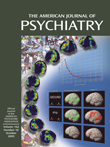Relationship Between Duration of Untreated Psychosis and Outcome in First-Episode Schizophrenia: A Critical Review and Meta-Analysis
Abstract
Method
Statistical Methods
Results
Duration of Untreated Psychosis and First-Episode Treatment Outcome
Duration of Untreated Psychosis and “Response”
Duration of Untreated Psychosis and Other Functional Outcome Measures
Duration of Untreated Psychosis and Relapse Risk
Potential Confounding Factors
Duration of Untreated Psychosis and Symptom Severity at First Treatment Contact
Duration of Untreated Psychosis and Neurocognition
Duration of Untreated Psychosis and Brain Morphology
Discussion
Implications for Understanding the Neurobiological Aspects of Schizophrenia
Implications for Reduction of Duration of Untreated Psychosis Through Early Intervention
Methodological Considerations
Future Study
Conclusions
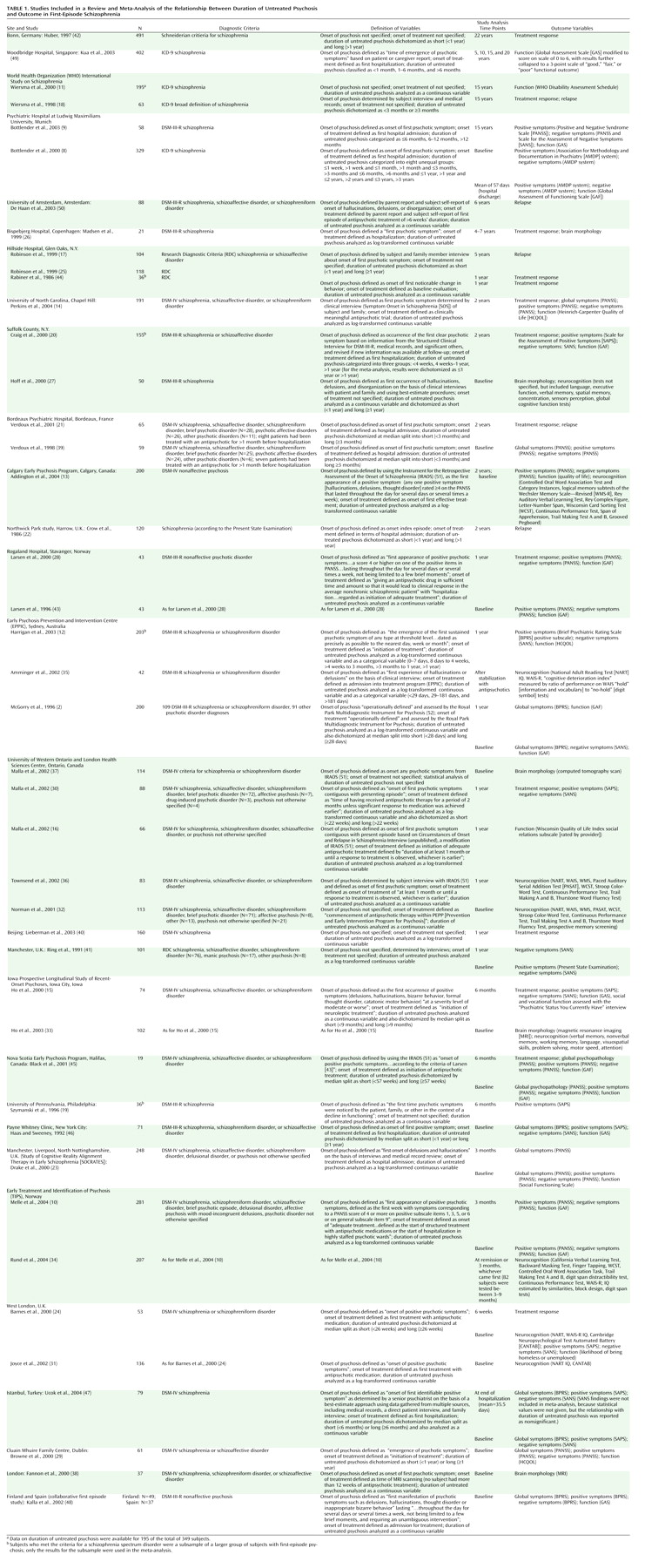
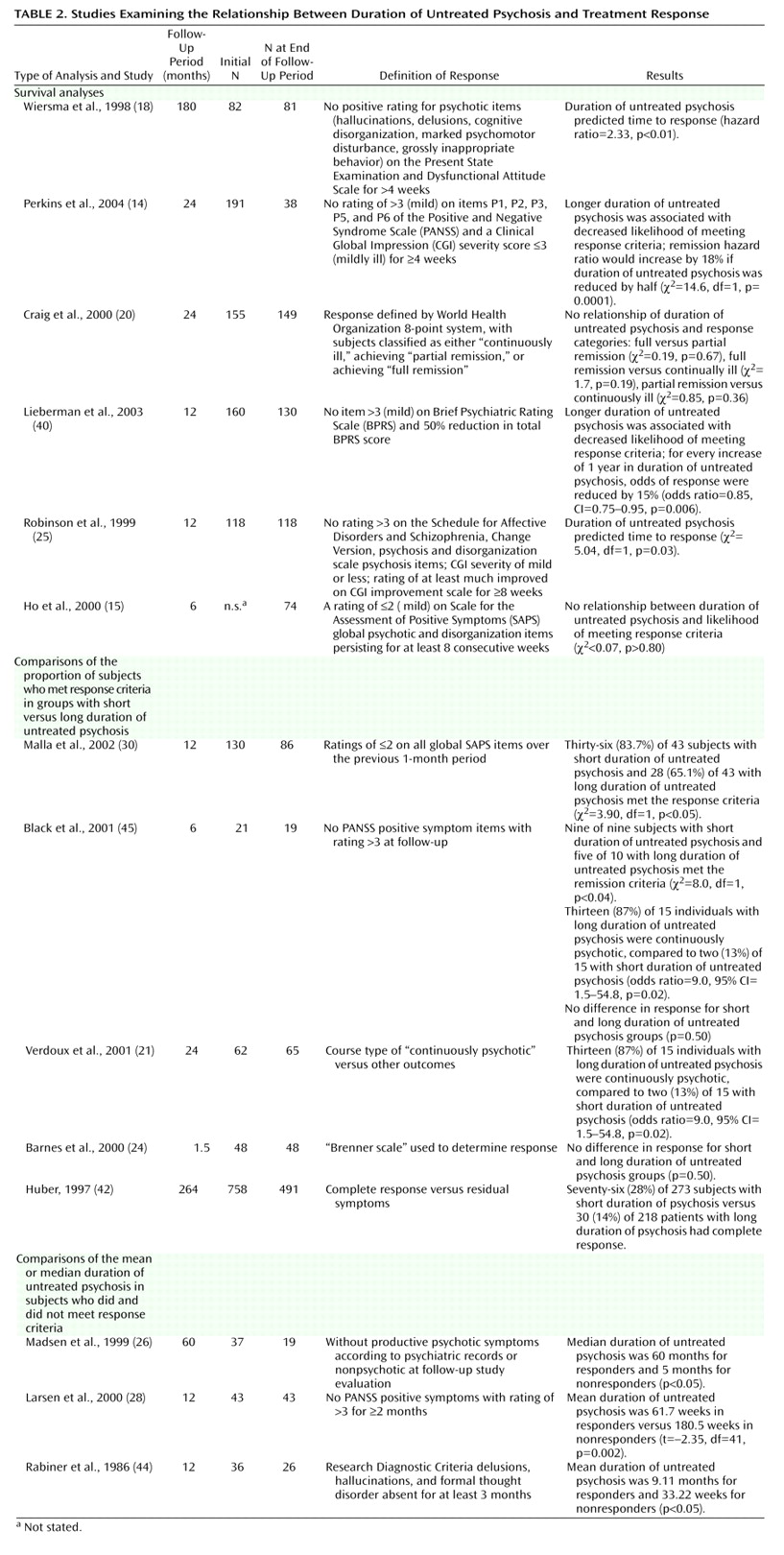
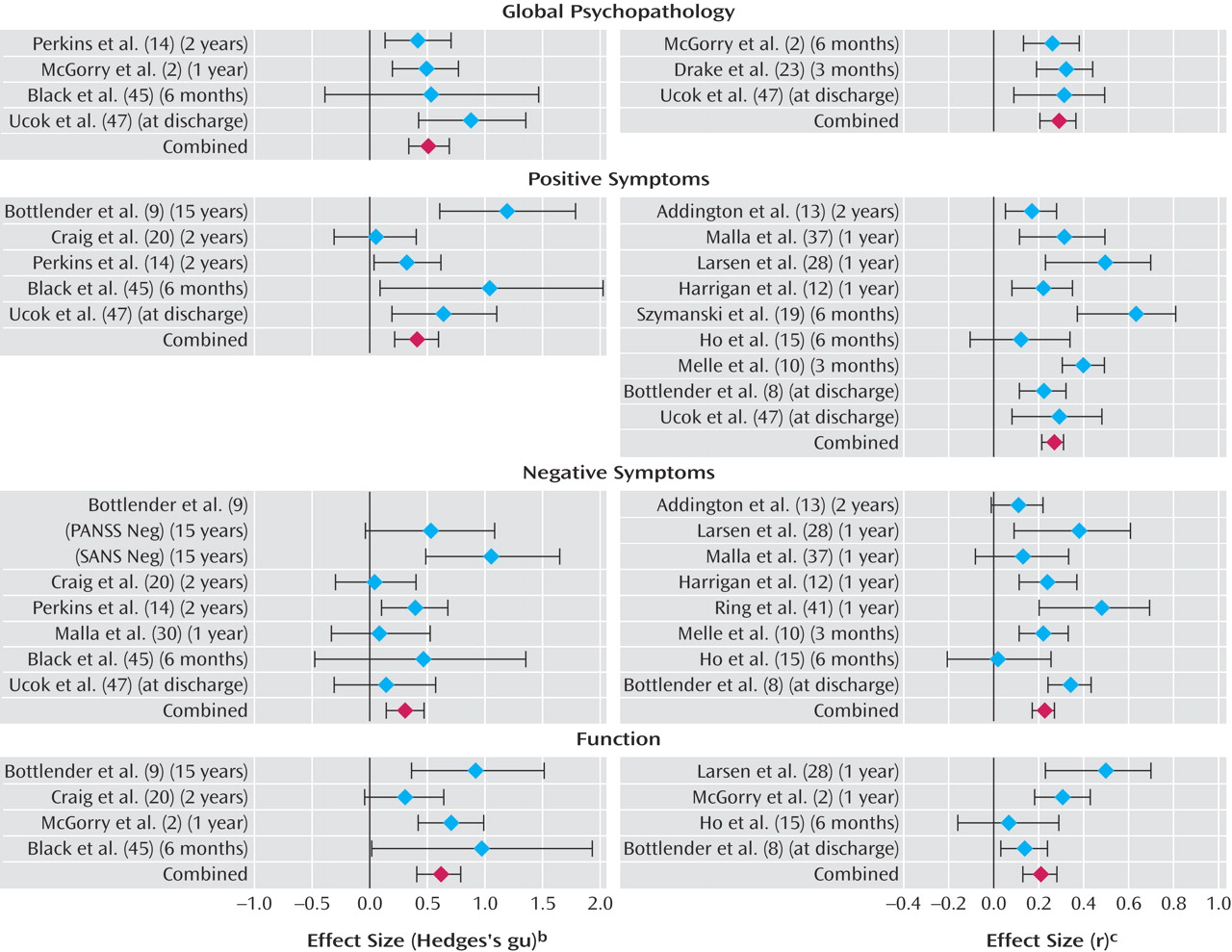
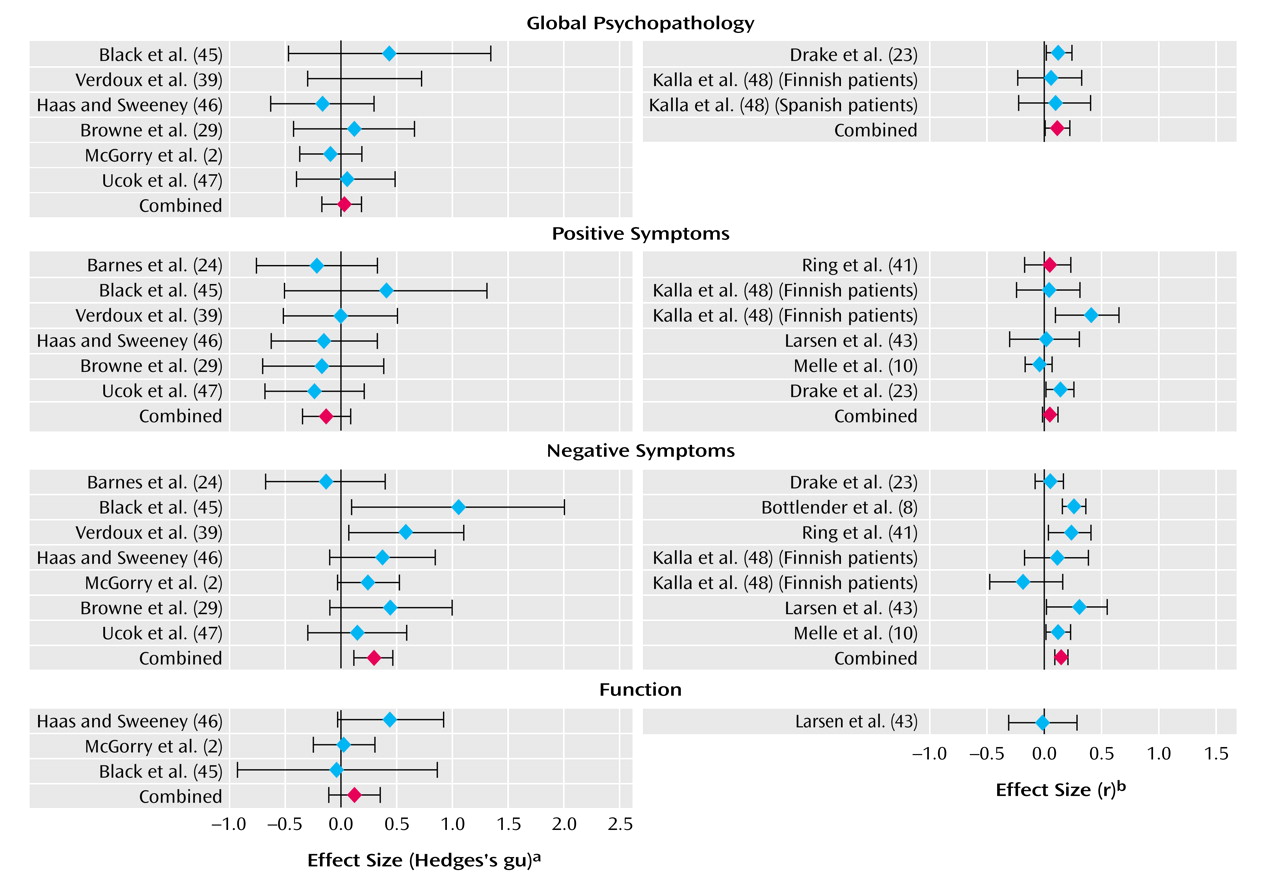
Footnote
References
Information & Authors
Information
Published In
History
Authors
Metrics & Citations
Metrics
Citations
Export Citations
If you have the appropriate software installed, you can download article citation data to the citation manager of your choice. Simply select your manager software from the list below and click Download.
For more information or tips please see 'Downloading to a citation manager' in the Help menu.
View Options
View options
PDF/EPUB
View PDF/EPUBGet Access
Login options
Already a subscriber? Access your subscription through your login credentials or your institution for full access to this article.
Personal login Institutional Login Open Athens loginNot a subscriber?
PsychiatryOnline subscription options offer access to the DSM-5-TR® library, books, journals, CME, and patient resources. This all-in-one virtual library provides psychiatrists and mental health professionals with key resources for diagnosis, treatment, research, and professional development.
Need more help? PsychiatryOnline Customer Service may be reached by emailing [email protected] or by calling 800-368-5777 (in the U.S.) or 703-907-7322 (outside the U.S.).
